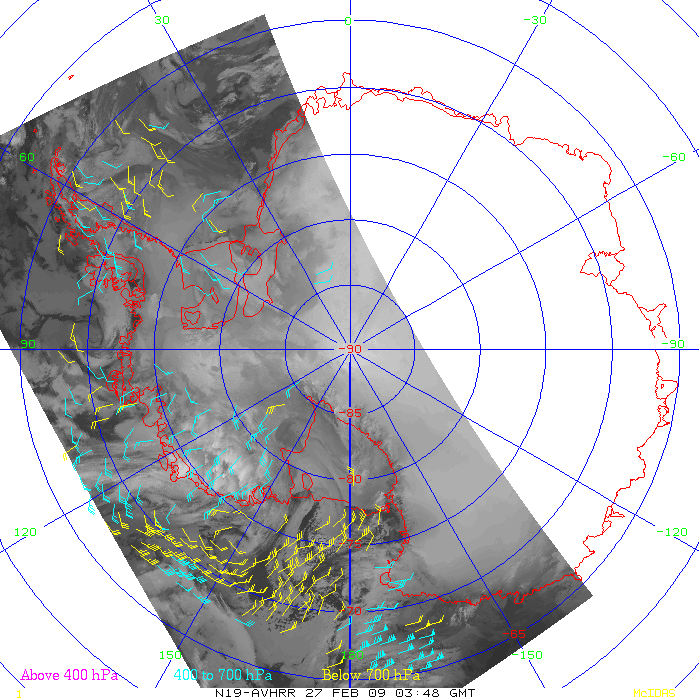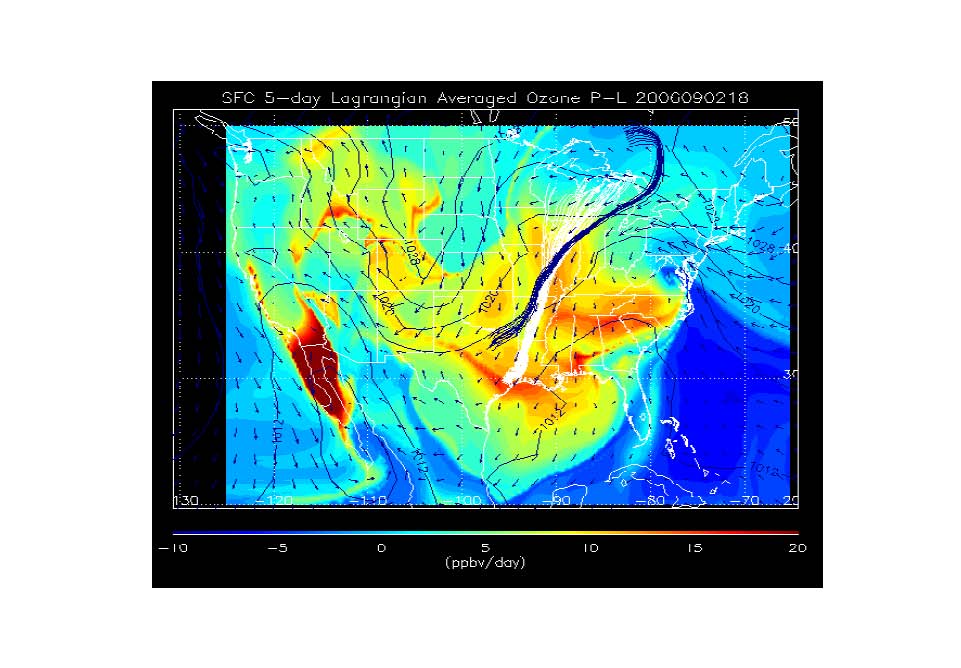
[ Archive ]

 |
ASPB and CIMSS Weekly Report
[ Archive ] |
 |
IN THE PRESS:
ITEMS FOR THE ADMINISTRATOR:
ITEMS FOR THE ASSISTANT ADMINISTRATOR:
ITEMS FOR THE OFFICE DIRECTOR, STAR:
Historical AVHRR Winds Paper Published: A paper
titled “Twenty Years of Polar Winds from AVHRR: Validation and
Comparison with ERA-40” by Richard J. Dworak (Cooperative Institute for Meteorological Satellite Studies) and Jeff Key was published
in the Journal of Applied Meteorolgy and Climatology (Vol. 49, January
2009). The historical Advanced Very High Resolution Radiometer (AVHRR) polar wind product described in the paper is currently being reprocessed to include more satellites and to extend the coverage through
2007.
(R. Dworak, CIMSS, 608-265-8620; J. Key, E/RA2, 608-263-2605, jkey@ssec.wisc.edu)
WMO Regional/Specialized Satellite Centers Executive Panel Meeting: The World Meteorological Organization (WMO) is developing a Regional/Specialized Satellite Centers for Climate Monitoring (R/SSC-CM) program, and held its first Executive Panel meeting in Geneva, Switzerland, on February 25-26, 2009. Jeff Key, Mitch Goldberg, and Andrew Heidinger participated by phone. Key represented the World Climate Research Program (WCRP) on the Panel; Goldberg represented the Global Space-Based Inter-Calibration System (GSICS) project. Heidinger is the lead on the cloud and aerosol R/SSC-CM proposal. Jaime Daniels and Jeff Key are both involved in the atmospheric motion vectors (wind) proposal. John Bates (National Climatic Data Center) is the NOAA representative on the Panel. (J. Key, E/RA2, 608-263-2605, jkey@ssec.wisc.edu; A. Heidinger, E/RA2, 608-263-6757, andrew.heidinger@noaa.gov)
ITEMS FOR THE DIVISION CHIEF, CoRP:
Polar Winds from NOAA-19: A demonstration of deriving winds over the Arctic and Antarctic was performed using data from the recently launched NOAA-19 satellite. This utilizes the same technique that is applied to the Advanced Very High Resolution Radiometer (AVHRR) 11 micron images from the other NOAA polar orbiting satellites. Further testing and validating is needed before the NOAA-19 winds product is generated routinely and made available on our ftp server. (D. Santek, CIMSS, 608-263-7410; J. Key, E/RA2, 608-263-2605) (Click image to enlarge)
(Click image to enlarge)CIMSS VISIT Activities: The Virtual Institute for Satellite Integration Training (VISIT) distance learning lessons "The Enhanced-V: A Satellite Severe Storm Signature" (http://rammb.cira.colostate.edu/visit/ev.html), "Trough of Warm Air Aloft (TROWAL) Identification" (http://rammb.cira.colostate.edu/visit/trowal.html), and "Water Vapor Imagery and Potential Vorticity Analysis" (http://cimss.ssec.wisc.edu/goes/visit/wv_pv.html) were led by staff from the Cooperative Institute for Meteorological Satellite Studies (CIMSS) on February 24, 26, and 27, 2009. Forecasters from five National Weather Service (NWS) offices (Aberdeen, South Dakota; Birmingham, Alabama; Davenport, Iowa; Glasgow, Montana; Riverton, Wyoming) participated in the VISIT lessons. (S. Bachmeier, CIMSS, 608-263-3958, S. Lindstrom, CIMSS, 608-263-4425)
Property Inventory Completed for ASPB: The
annual NESDIS “wall-to-wall” 2009 inventory for NOAA personal property
at the Advanced Satellite Products Branch (ASPB) was completed.
Verifying paperwork and forms accounting for the 52 assets at ASPB were
provided to the appropriate NESDIS personal property management
representative (B. Foreman) on 25 February 2009. (G. S. Wade, E/RA2,
608-263-4743, gary.s.wade@noaa.gov)
 (Click image to enlarge)
(Click image to enlarge)VISITORS:
Visitor to CIMSS from the Japan Meteorological Agency: Dr. Kazuki Shimoji from the Japan Meteorological Agency (JMA) is visiting the Cooperative Institute for Meteorological Satellite Studies (CIMSS) for a one month period to work on the development of atmospheric motion vectors from MTSAT and GOES rapid scan imagery. The goal is to optimize the processing through shared methodologies. His research will be accommodated by the CIMSS Winds Group. (C. Velden, CIMSS, 608-262-9168).
NEXT WEEK:
LOOKING AHEAD:
| Archived Weeklies Page | Submit a report item |